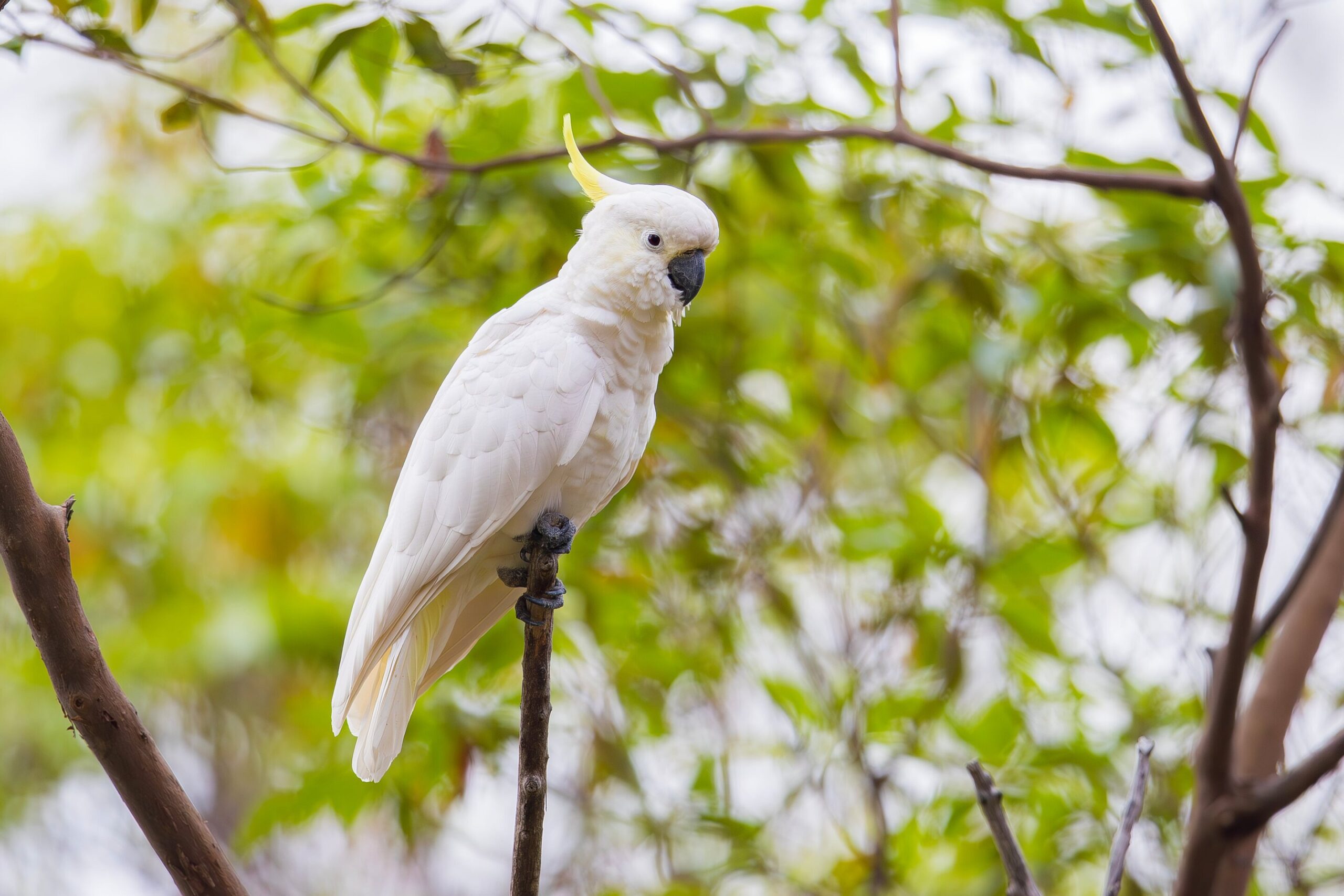Ecologists from the School of Biological Sciences at The University of Hong Kong (HKU) have unlocked crucial genetic mysteries surrounding two iconic cockatoo species: the Sulfur-crested Cockatoo (Cacatua galerita) and the critically endangered Yellow-crested Cockatoo (Cacatua sulphurea). Their groundbreaking research not only offers a clearer understanding of these species but also provides tools to enhance their conservation amidst pressing threats like habitat loss and poaching.
Their work, recently published in the journals Molecular Biology and Evolution and Molecular Ecology, represents the first comprehensive genome studies on these cockatoos. These findings not only clarify their taxonomy but also highlight the role of genetics in formulating effective conservation strategies.
Reconfirmation of the Triton Cockatoo as a Distinct Species
For over a century, the Triton Cockatoo (Cacatua triton) had been grouped with the Sulfur-crested Cockatoo due to their close resemblance. Both were treated as a single species, widely distributed across Australia and New Guinea. However, the HKU team has now reconfirmed that the Triton Cockatoo is, in fact, a separate species endemic to New Guinea. Meanwhile, the Sulfur-crested Cockatoo’s range is now known to be confined to Australia and a small section of southern New Guinea.
Using state-of-the-art genomic analysis, this distinction, published in Molecular Biology and Evolution, reshapes how conservation programs approach these species, particularly in New Guinea. This region has witnessed significant efforts by the Indonesian government and NGOs to reintroduce surrendered pet birds into the wild in response to challenges like climate change, deforestation, and poaching.
Dr. Arthur Sands, lead author of the study and a specialist in cockatoo ecology, highlighted the risks posed by misidentifying species during reintroduction programs. “Introducing the wrong species in the wrong location could lead to hybridization, competition, or even ecosystem disruptions,” he explained. These insights underline the need for genetic data in reintroduction efforts to ensure ecological balance.
The confirmation of the Triton Cockatoo as a distinct species also carries implications for global conservation policies. Instruments such as the Convention on International Trade in Endangered Species of Wild Fauna and Flora (CITES), which regulates the international trade of many parrot species, will require updates to reflect this taxonomic revision. Such changes may pave the way for additional protection measures.
Revamping Yellow-crested Cockatoo Conservation with Museomics
The second study, published in Molecular Ecology, tackled the conservation of the critically endangered Yellow-crested Cockatoo. With fewer than 2,000 individuals remaining in the wild, this species faces dire threats from illegal trapping and habitat destruction in its native ranges of Indonesia and East Timor. Researchers utilized DNA from century-old museum specimens—a pioneering approach known as “museomics.”
This technique involved analyzing genetic materials extracted from preserved specimens in museums across the United States and Europe. By doing so, the researchers were able to investigate the genetic diversity of the Yellow-crested Cockatoo without disturbing the fragile populations in the wild. This study uncovered three distinct genetic groups within the species, simplifying the previous classification of seven subspecies.
One surprising finding was the lack of distinctiveness in the C. s. citrinocristata subspecies, which has long been treated as a separate group. The study also raised questions about the isolated C. s. abbotti population, found on a remote Indonesian island. How these cockatoos, known for limited migration, reached such an isolated area remains a mystery.
Dr. Astrid Andersson, who led the study, emphasized the critical value of museomics in modern conservation biology. “By studying genetic data from rare, inaccessible, or even extinct taxa, we gain insights that directly inform conservation measures like translocation, genetic rescue, and captive breeding,” she explained. Such steps are vital in averting the global extinction of the Yellow-crested Cockatoo.
Genetic Insights as a Pillar of Conservation
Professor Juha Merilä, the Associate Director of HKU’s Ecology & Biodiversity Research Group and Chair Professor of the School of Biological Sciences, noted that accurate identification of evolutionarily significant units is key to protecting endangered species. “Our research underscores the importance of genetic data in conservation planning,” he remarked.
The findings have far-reaching implications for conservation strategies. For example:
- Informing Reintroduction Programs: The distinction between Sulfur-crested and Triton Cockatoos prevents accidental crossbreeding or competition during reintroduction efforts.
- Targeted Conservation Planning: Knowing the genetic makeup of the Yellow-crested Cockatoo allows for more focused efforts, such as maintaining genetic diversity through captive breeding.
- Global Policy Adjustments: Taxonomic updates based on these findings will necessitate changes in international conservation laws, offering new legal protections to these cockatoos.
- Ecosystem Stability: Maintaining distinct species prevents unintended disruptions to ecological networks, especially in sensitive regions like New Guinea.
The Path Forward: Genetic Conservation in Action
The HKU research represents a major leap forward in using genetics to guide conservation efforts for some of the world’s most iconic and threatened birds. As human activity continues to impact biodiversity, integrating genetic insights into wildlife management will become increasingly crucial.
By reconfirming species boundaries and shedding light on genetic diversity, this work paves the way for science-based solutions to conserve cockatoo populations. These insights reinforce a hopeful message: with rigorous science and international collaboration, humanity can still ensure the survival of these magnificent birds for generations to come.
References: Arthur F Sands et al, Genomic and Acoustic Biogeography of the Iconic Sulphur-crested Cockatoo Clarifies Species Limits and Patterns of Intraspecific Diversity, Molecular Biology and Evolution (2024). DOI: 10.1093/molbev/msae222
Astrid A. Andersson et al, Museomics Sheds Light on Evolutionary Diversity in a Critically Endangered Cockatoo Species From Wallacea, Molecular Ecology (2024). DOI: 10.1111/mec.17616
Think this is important? Spread the knowledge! Share now.
